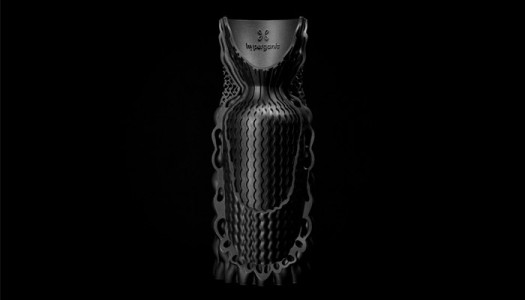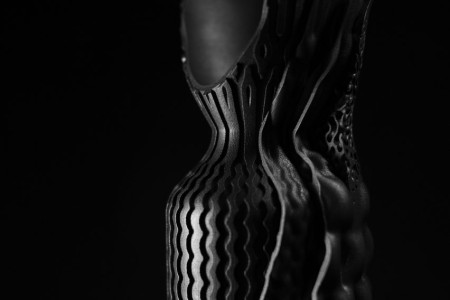
WHY THIS MATTERS IN BRIEF
As Creative Machines get better at designing and innovating products one day they’ll outperform humans.
 Interested in the Exponential Future? Connect, download a free E-Book, watch a keynote, or browse my blog.
Interested in the Exponential Future? Connect, download a free E-Book, watch a keynote, or browse my blog.
For the past number of years I’ve been taking about the rise of so called Creative Machines, Artificial Intelligence (AI) based “innovation” machines, that can design and innovate things for themselves without any human intervention – things such as aircraft parts, chairs, fashion lines, interplanetary rovers, self-evolving robots, and Under Armour trainers. And now those same creative machines have made yet another leap, and again it’s another first for the space industry, after German software company Hyperganic announced they’d developed a 3D printed rocket engine prototype, which was completely designed by AI.
Unlike a traditional rocket engine, which consists of individually designed parts that are combined together the AI designed rocket engine was 3D printed as one continuous piece. This includes both the combustion chamber where fuel and oxidiser is burned and the surface channels, through which the fuel is circulated to cool the chamber and keep it from overheating.
“In a rocket, the cooling channels are generally welded onto the combustion chamber, which through wear and tear can cause errors and explosions,” explained Hyperganic’s design director Duy-Anh Pham.
Courtesy: Hyperganics
“The components are engineered separately, so the design is not actually holistically optimised to be the best, most efficient it can be,” he continued. “Our engine in contrast is made up of only one piece, that has been designed to have the lowest weight and most effective cooling, and so the highest possible performance for a given rocket.”
To create the engine, a rocket scientist first stipulated the core features of a rocket engine – the shape of the combustion chamber and the necessary cooling performance. Rather than being translated into CAD files, which is the usual practice, the information was expressed as formulas and stored in an Excel sheet in a format that could be read by Hyperganic’s algorithm. This algorithm then used the data to generate the geometry of the final piece from the bottom up.
“We compare the process to growing rather than designing,” said Pham, “You’re telling the algorithm what you need the object to do and then the algorithm is kind of growing the object with the performance you had in mind, with the specifications. So the process doesn’t create a blueprint, but the DNA for an object.”
From there, the information was then fed into an industrial 3D printer which then printed it out using an aerospace nickel alloy called Inconel 718.
“We are able to print in different material densities, a method which has not been used in rocket design so far,” said Pham. “So the inner part is very solid, while towards the outside the structure becomes more porous to save on weight. Every extra pound counts.”
Hyperganic is currently in talks with different space companies about how this approach could be integrated into their design process, and if the process is implemented by an aerospace organisation then the design will be further refined using a digital evolution feedback loop – in other words a continual feedback loop that improves the design every time it runs, and bearing in mind the speed of AI this loop could be run thousands of times a second to evolve the design at incredible speed.
“You test the first design or run virtual simulations of how it would perform, input the data from the test into the algorithm and it uses that to improve the design of the next model,” Pham explained. “It’s self-optimising, rendering one solution after another, always comparing. The new models are always generated from scratch. Every time you change your requirements, you get another rocket that is perfectly designed for the needs that you’ve set out.”
Beyond rocket engines, the company’s AI driven software platform also lends itself to an almost infinite range of other products.
“Our system is completely modular,” said Pham. “Every solution, in this case the rocket engine algorithm, is made up on a combination of algorithmic components. Applying components from the rocket algorithm might not work when applying it to something else because it’s not a rocket. But a component like the cooling channels is very similar to our blood vessels so you could take these components from the rocket and design another solution for creating a synthetic organ for example.”
In the US, dedicated aerospace manufacturer Relativity Space has developed a 3D printed rocket that is built using autonomous robots and has just one percent as many individual parts as a traditional rocket, and while designer Sebastian Errazuriz has argued that the rise of AI driven design would put architects out of business, Hyperganic argues that its method is still dependant on some human input with the “AI simply doing the heavy lifting” – although let’s face it, in time that will change, and we’ve already seen several examples, like those I mentioned above, where the creator was a machine, and not a human.




















